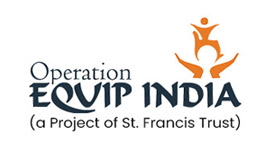Overview
Advocacy for obtaining Government Benefits
OEI engages in advocacy efforts to secure government grants, subsidized loans, UDID cards, and free rail and bus pass facilities, empowering individuals with disabilities to access essential services and opportunities.
The Process
The process of Advocacy for obtaining government grants, subsidized loans, UDID cards, free rail and bus pass facilities, etc. by OEI involves:
Identifying Needs: OEI assesses the needs of individuals with disabilities and their families to understand the specific support required.
Engaging with Authorities: OEI establishes connections with government authorities, advocacy groups, and relevant stakeholders to discuss the challenges faced by people with disabilities and the benefits of providing grants, loans, and facilities.
Data Collection: OEI gathers data and statistics to support its advocacy efforts, showcasing the impact of government support on the lives of disabled individuals.
Awareness Campaigns: OEI conducts awareness campaigns and workshops to inform the public and policymakers about the importance of inclusive policies and support services.
Policy Recommendations: Based on research and data, OEI proposes policy recommendations to government bodies, highlighting the need for financial assistance and accessibility measures.
Networking: OEI collaborates with other organizations and NGOs working in the disability sector to strengthen advocacy efforts and create a unified voice.
Meetings and Presentations: OEI arranges meetings with relevant government officials, presenting evidence-based arguments for the allocation of grants, loans, UDID cards, and transportation facilities.
Follow-up and Monitoring: OEI continuously follows up with authorities to track the progress of its advocacy initiatives and ensures that the proposed support is implemented effectively.
Impact Evaluation: OEI evaluates the impact of its advocacy efforts, measuring the positive changes brought about by obtaining government grants and facilities.
Empowering Individuals: Throughout the process, OEI encourages individuals with disabilities and their families to actively participate in the advocacy efforts, empowering them to advocate for their rights and needs.
By engaging in this process, OEI aims to create an inclusive society where people with disabilities have equal access to opportunities and services.
Advocacy by OEI for obtaining government grants, subsidized loans, UDID cards, free rail and bus pass facilities aims to secure essential support for individuals with disabilities, promoting inclusivity and equal opportunities.
FAQ's
Few of the most asked questions – answered.
The purpose of OEI’s advocacy is to ensure that individuals with disabilities have access to essential resources and benefits provided by the government, such as grants, loans, UDID cards (Unique Disability Identity), and free transportation facilities. This advocacy aims to promote inclusivity and improve the overall well-being of people with disabilities.
UDID cards are essential identity cards that provide recognition and authentication of disability status. They enable individuals with disabilities to access various government benefits, schemes, and facilities that are specific to their needs.
OEI guides individuals with disabilities through the application process to obtain free rail and bus pass facilities provided by the government. They offer support in gathering the required documentation and advocate for smoother processing of applications to ensure eligible individuals can avail these benefits.
Yes, besides government grants, loans, UDID cards, and free transportation facilities, OEI’s advocacy efforts also extend to various other areas, including accessibility, education, healthcare, employment opportunities, and overall inclusion for people with disabilities in society. They strive to address the diverse needs and challenges faced by individuals with disabilities through their advocacy initiatives.
Sponsor a Livelihood Service Today.
Looking for assistance?
Lorem ipsum dolor sit amet, consectetur adipiscing elit. Ut elit tellus, luctus nec ullamcorper mattis, pulvinar dapibus leo.

